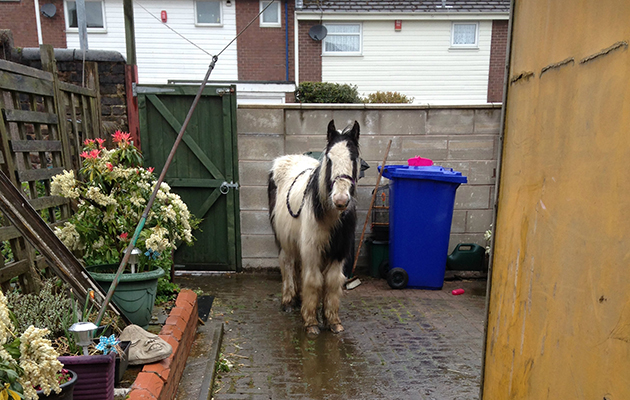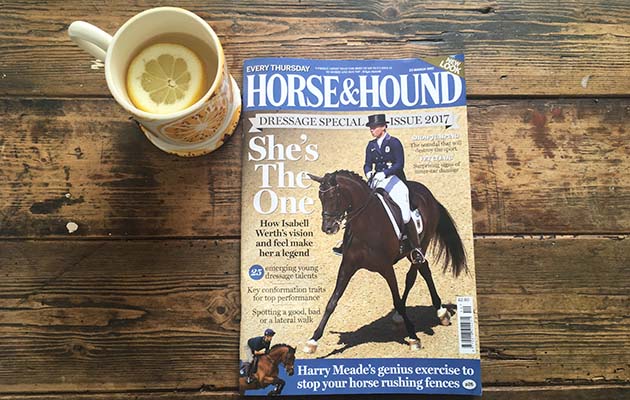
Flies are ever-present pests in summer, with horse fly bites being a particular problem for horses and riders alike. Biting flies can pierce the horse’s skin and feed on its blood, while nuisance flies lay secretions in and around the horse’s eye, mouth, nose and other sensitive spots.
Flies can carry disease and an allergic reaction can result from any fly bite, while all flies cause annoyance and irritation to horses and humans alike – an important consideration when working or competing horses.
Types of flies that trouble horses
Horse flies (Tabinidae) emerge in June and July and are most active on warm, sultry days, especially around woodlands. Favourite feeding sites include the horse’s underside, legs, neck and withers. The bites appear as painful papules (pimples) and wheals (small lumps) with a characteristic, central ulcer. These flies will rarely venture into dark areas, so stabling can offer some protection.
In general, home-made fly repellents are of little benefit against horseflies, as they are robust creatures. Insecticides known as synthetic pyrethroids – especially permethrin or cypermethrin – offer the best solution and can be bought from tack shops. Follow the directions on the product, as many are not suitable for daily use.
Black flies (Simuliidae) are small in size (approximately 2mm-5mm) and breed in rapidly moving water. High-risk times are dawn and dusk during spring and early summer, when stabling may be helpful. These flies commonly feed around the face – particularly inside the ears, where they trigger allergic skin reactions to their saliva, and distract the horse – but also on the horse’s neck and underside. Bites form as painful lumps, often with pin-prick areas of bleeding and crusting.
Synthetic pyrethroid fly sprays can act as a deterrent, although physical barriers such as ear nets and oil-based products – oil of citronella, for example – will discourage these flies from landing on the horse. Petroleum jelly applied inside the ears may prevent the insects biting.
Midges (Culicoides) are 1mm-3mm long and hover in swarms at dawn and dusk. Eggs are laid in standing water, so avoid stagnant areas. Different species of midges feed at different sites on the horse. Classically, mane and tail hairs are broken or rubbed away, exacerbating sweet itch in animals that are allergic to the bites.
Insect repellents can be very effective against these pests. Permethrin-based products are best and should be applied in late afternoon. Oil-based products can be applied several times daily to prevent flies landing. Bringing horses in before dusk and using a fan to create a brisk breeze helps keep midges away, while rugs may also be useful.
Stable flies lay eggs in moist, rotting vegetation – typically, hay or silage that is contaminated with urine, water or manure – so are associated with poor hygiene. They feed on horses’ legs and abdomens, and bites typically appear as itchy or painful wheals or papules with a central crust. The best prevention is to maintain high hygiene standards, but repellents can also be used. Permethrin-based products are most effective directed at the legs.
Other problematic insects include mosquitoes, bees and wasps – these produce uncomfortable bites, as well as causing alarm to horses. While wasps and bees are present throughout the day, mosquitoes are at their worst in the two hours after sunset.
How to treat horse fly bites
For a one-off bite, apply an ice pack or bathe with cool, salt water (use a teaspoon of salt to two mugs of water). However, with multiple bites, a mild horse shampoo can help to remove irritating scurf or bacteria and cool the inflamed skin. A topical anti-itch preparation such as colloidal oatmeal, witch hazel, calamine lotion or zinc oxide cream can also help. In addition, try to prevent the horse making the affected area worse by rubbing.
As they are alkaline, wasp stings should be bathed with a dilute acid, such as vinegar or lemon juice. Bee stings, however, are acidic and should be bathed with bicarbonate of soda. The bee leaves its sting behind, so try to remove this with tweezers, as venom will continue to enter the skin. If the stinger is below the surface, it will be shed with normal skin healing.
It is rare for a bite to turn septic; if the area is open and weeping, bathe with a mild antiseptic solution, and if this does not help, consult your vet.
Continued below…
Liked this? You may also enjoy reading these articles…
http://www.horseandhound.co.uk/wp-content/themes/keystone-theme/shortcodes/js/collections.js
Expand
Laminitis in horses: recognising the signs
Laminitis in horses: recognising the signs
Contrary to myth, laminitis occurs all year-round and…
Expand
How to avoid your horse suffering from sunburn this summer
How to avoid your horse suffering from sunburn this summer
We all know about applying sun cream to…
Preventative measures to prevent bites
- Use fly barriers such as anti-midge/fly turnout rugs and neck covers, plus fly masks and other protective gear
- Apply a long-lasting fly spray, using a spot test on a small area first to test for sensitivity
- Spray the stables with insecticide or use fly-trap tapes
- Eliminate puddles and ponds of still water, where midges might breed
- Practise good hygiene around the yard
- Worm horses against bot flies in winter
- Keep horses in when the flies are bad
- Use a fan in the stable to blow away flies
For all the latest equestrian news and reports, don’t miss Horse & Hound magazine, out every Thursday

































